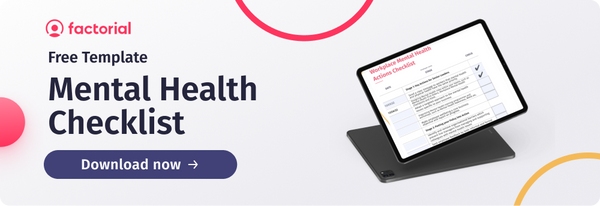A recent survey has revealed that 79% of the UK workforce expect more employer and HR support during the cost of living crisis. An effective staff wellbeing policy should address this, yet financial wellbeing is reportedly the most neglected area in company policies across the nation. According to the CIPD, only 11% of companies focus on finances within their people strategy.
Enter HR, flying in capes with fists thrust in the air.
Over the pandemic, HR teams were heavily relied on to support staff and to reimagine employee experience strategy. As the country is plunged back into turbulent times, HR must don their forward-thinking caps yet again to find tangible ways of easing financial pressures whilst also supporting employees mentally. Doing so without costing companies an arm and a leg poses a real challenge, but there are many creative ways it can be done.
In this guide, we explore five ways HR support can improve the financial wellbeing of employees during the cost of living crisis.
Offer HR Support Through Training
Financial wellbeing is not just about income. It’s also about having ‘soft skills’ related to money, such as judgement and behaviour. Giving staff support to develop these will provide solid foundations to build on and set employees up for the long term.
We’re not saying that HR leaders need to be experts in the world of finance (so you can breathe a sigh of relief). What we are suggesting is outsourcing coaches trained in financial wellbeing and digital financial management tools. Experiential learning opportunities like workshops and seminars about financial health can also offer a more engaging solution.
The same CIPD survey concluded that employees with access to these services felt ‘more positive about being part of their organisation, better about coming to work and more focused on the job’. So really, it’s a win-win.
For companies that already offer these programmes, the priority should be driving engagement by guiding employees towards them with memos and step-by-step guides. Carving out time in work calendars for tutorials and signposting these resources in your staff wellbeing policy should help with visibility, too.
If providing these benefits is not financially possible, there are a few innovative, outside-of-the-box options available to companies, such as ‘robo advisors’. These admittedly sound quite strange…but hear us out. These automated services offer staff support with their finances at a much lower cost than one-on-one advisors.
There are also plenty of free, impartial online resources that you can signpost to employees, such as this money helper service recommended by Citizen’s Advice.
Normalise the Conversation to Show HR Support
As the age-old saying goes, ‘a problem shared is a problem halved’.
Money is a topic that tends to feel quite taboo and can be shrouded in shame and embarrassment. These feelings can be dispelled through effective HR support and people strategy. Fostering a company culture and building a staff wellbeing policy that prioritise honesty and transparency can combat these misconceptions.
The next important step is providing a platform for these conversations. Opening lines of communication through internal channels creates more opportunities for staff and generates a sense of camaraderie. This can also remind employees that they’re not alone, which is key to combating financial distress and boosting financial wellbeing.
Opening the floor to discussion is sure to benefit the company as well. A study by The Workforce Institute revealed that 88% of employees whose companies financially outperform others in their industry feel heard compared to 62% of employees at financially underperforming companies.
In creating a judgement-free atmosphere, employees will also feel there is psychological safety and HR support at work. This security can empower workers to be comfortably themselves. In turn, this can improve productivity and loyalty to your company, reducing your turnover rate.
Once again, a win-win.

Tailor Your HR Support
Listening to your workforce can also help to shape your employee experience strategy. Doing so allows you to gather feedback and profile your workforce. After all, staff support is easier to provide when you know the roots of your employees’ issues.
The most effective people strategy is tailored to the needs of your staff. Start with the question: what are the specific problems my company’s employees are facing?
MD at Visier, a HR metrics company, has emphasised the need to keep “abreast of employee sentiment and [implement] robust employee experience strategies” to “create a picture of what it is like to work at a company, and how employees are feeling.” His words grow more poignant as the cost of living crisis worsens in the UK.
In other words, you can use your own people data to find the problem and personalise the response. This means building an agile people strategy that is adaptable to various teams and demographics. The specific burdens of each employee will be different, meaning the solutions will be too.
Include Hybrid Working in Your People Strategy
A Visier report has shown that employees are conscious of the financial benefits to working from home. A massive 79% stated they saved money on commuting and 47% reported they saved money on buying lunch.
Most companies are now offering hybrid work schedules, or at least the option to work remotely on occasion. As the UK is plunged into a cost of living crisis, perhaps there is a case for reducing mandatory office days even further. Doing so could cut costs for employers too, thanks to fewer employees in the office, reduced utility bills and potential downsizing of office space.
If returning to the office is not something your company is willing to compromise on, then consider other ways you can offer staff support. Take another look at the financial barriers to office working and think about how to break those down with employee benefits. Could you offer a cycle to work incentive scheme so employees could save on commuting costs? Or perhaps you could provide basic breakfast and lunch options?
Incorporating these small perks into your people strategy could go a long way in changing staff perceptions and retaining talent. It could also make your company more attractive to top talent and therefore improve your talent acquisition.

Measure Financial Wellbeing of Employees
Pinpointing wellbeing metrics, tracking them over time and using performance to shape your staff wellbeing policy can help to optimise your overall people strategy.
This is much easier said than done, but luckily financial wellbeing platform Wagestream has published a list of metrics for companies to measure the financial wellness of employees, including:
- Employee retention rate
- Absenteeism
- Pension contribution data
- Engagement with financial wellbeing benefits
- Engagement with financial wellbeing champions
- Requests for early access to lump sums
- Increase in staff selling holiday days
- Participation in salary sacrifice schemes
- Increase in the numbers of requests for advances or weekly pay.
Deploying regular surveys is another effective way to collect data, keep on top of employee sentiment and show HR support. Create questions aimed at uncovering how employees are coping financially and how these difficulties are impacting their work. Not only does this mean more insights for management, it’s also another way to ensure employees feel they’re being listened to.
However, simply gathering this data is not enough. It’s about how HR use these KPIs to review employee experience and set objectives for future people strategy.
Reporting in this way could also help to build a business case for the other methods explored in this article, such as outsourcing financial wellbeing and education resources. Being armed with statistics and trends about your workforce is sure to bolster your proposal and increase stakeholder support.
HR reports and analytics software such as Factorial’s can make this process quicker and easier. This allows you to create personalised reports in a few clicks, and to customise your reports dashboard to show your data how you want it. You can also track multiple financial wellbeing metrics in one place, such as time-off, survey results and retention rate.
Financial Wellbeing Benefits Everyone
Of course, companies have a duty of care to support staff. It could be detrimental to your employees to ignore the impact of the cost of living crisis on mental health.
However, offering staff support and easing these burdens can also prove commercially beneficial. A Neyber study revealed that 70% of the UK workforce waste one fifth of their time at work worrying about their financial situation. Basically, money worries cause lower productivity. Not to mention that these worries can also increase costs related to absence, healthcare and bad decision-making.
Incorporating these five approaches into your people strategy, whilst also re-evaluating and tailoring current benefits on offer, could strengthen HR support for employees at your company.
Manage your Financial Wellbeing Strategy with Factorial
Building and measuring a financial wellbeing strategy is a difficult process but using the correct tools and software to support and manage your goals can make it that bit easier.
For example, performance management software can track your wellbeing metrics and measure the impact of your financial wellbeing strategy. Generate automated performance reviews and personalise them to individual employees for more meaningful insights. You can also track employee development and progress towards individual goals, so you know exactly when training is needed and how current training courses are being engaged with.
This can be integrated with our reports and analytics software, allowing you to run custom reports to monitor employee development. Having these tools all in one place will save you time and allow you to continually optimise your financial wellbeing strategy and overall people strategy.










